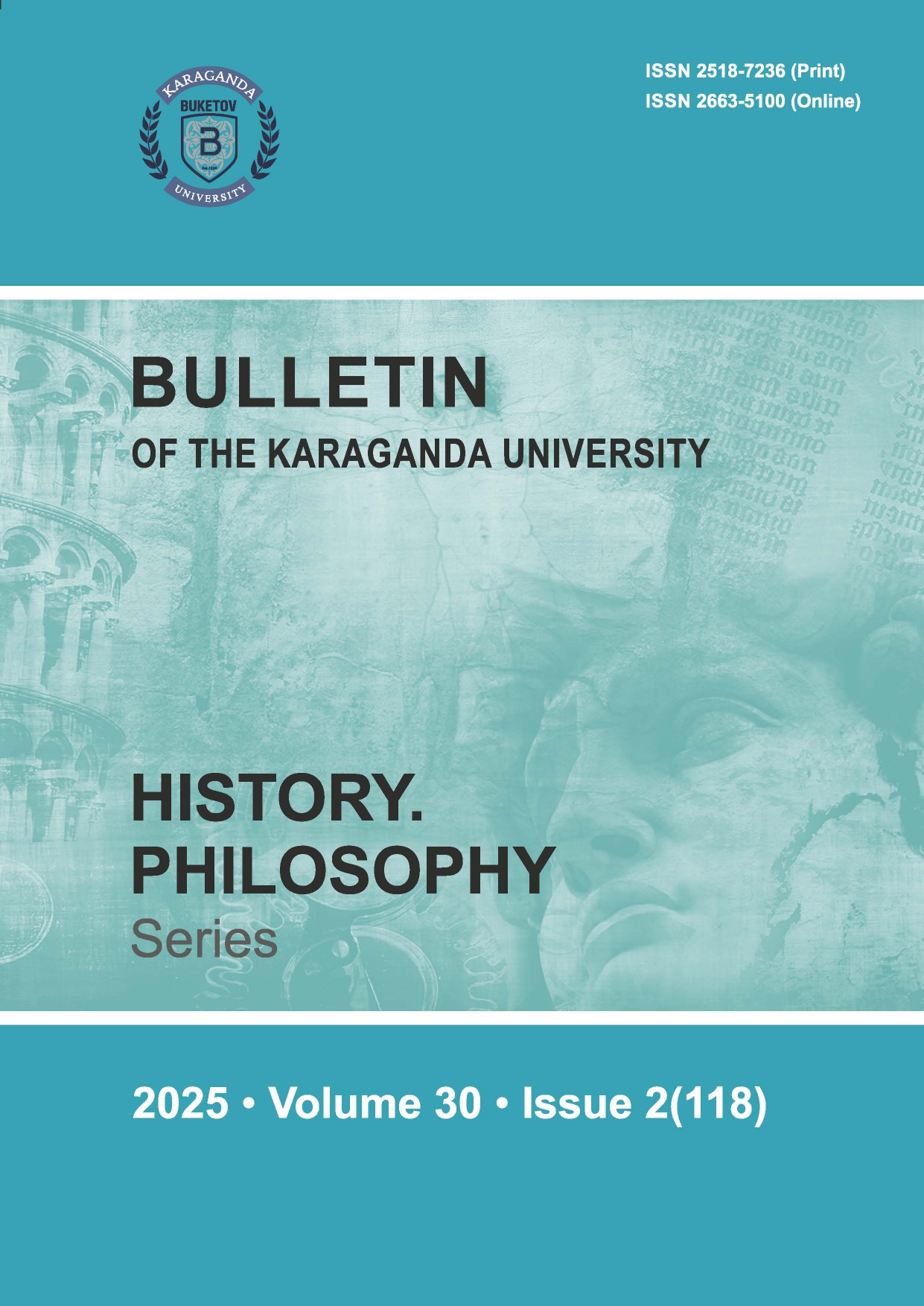Social and Demographic Policy of the USSR in the 1950s and 1960s within the Context of the “Demographic Explosion” of the Kazakh Population
DOI:
https://doi.org/10.31489/2025hph2/128-139Keywords:
birth rate, Kazakhs, rural population, USSR, decree, healthcare, education, pension reform, collective farm, state farm, motherhoodAbstract
The article provides an analysis of the socio-demographic policy of the USSR in the 1950s and 1960s which is one of the main reasons for the “demographic explosion” of the Kazakh population. The purpose of the research is to consider the state measures implemented in various socio-economic and cultural areas of the society (healthcare, education, housing construction, social protection and pensions, maternal and child health) and their impact on the demographic indicators of the population of Kazakhstan. The authors paid the greatest
attention to the socio-economic reforms affecting the rural sector as part of the ongoing program for the development of virgin and fallow lands. These reforms significantly influenced the reduction of mortality rates, especially among children, and the emergence of favorable trends in the demographic development of the Kazakh population of the republic. Based on an analysis of the socio-demographic policy features, the authors came to the conclusion that these reforms had a positive impact on the well-being of the Soviet people and on birth rates. State support of the population of the republic (including rural one), implemented in almost all spheres and directions as an interconnected and complementary system, made it possible to significantly increase the population size and improve the life quality, thereby stimulating a demographic explosion in Kazakhstan. The demographic potential of the Kazakh population originated from the period of the 1950s and 1960s was not only quantitative, but also qualitative in nature. The generation of the “demographic explosion” was almost entirely covered by the system of secondary education, partially by post-secondary (vocational) and higher education.




